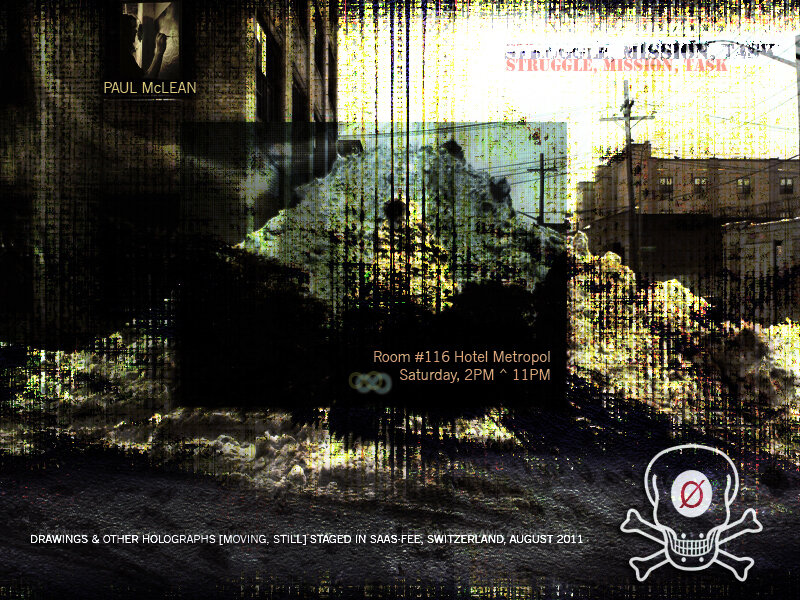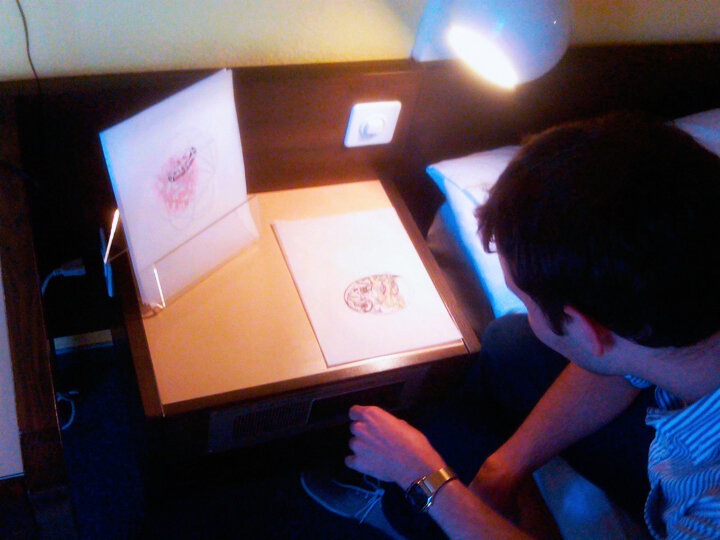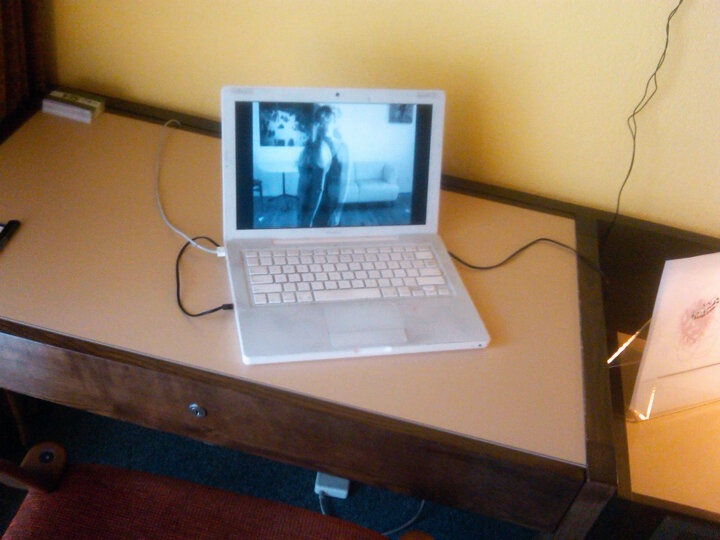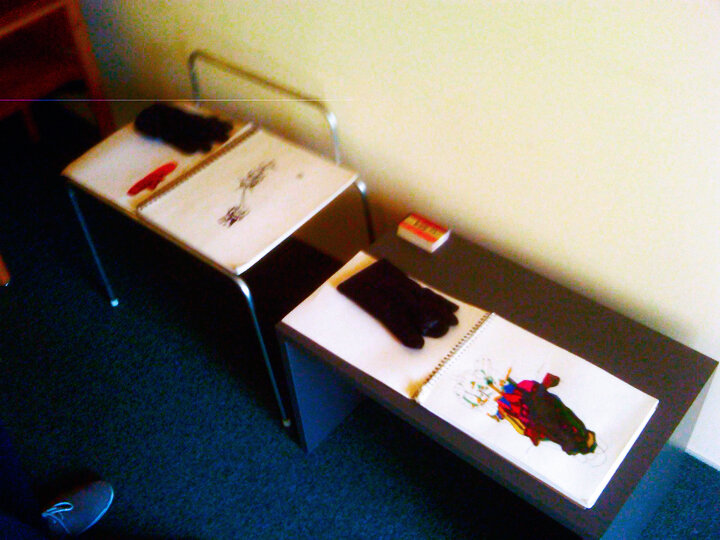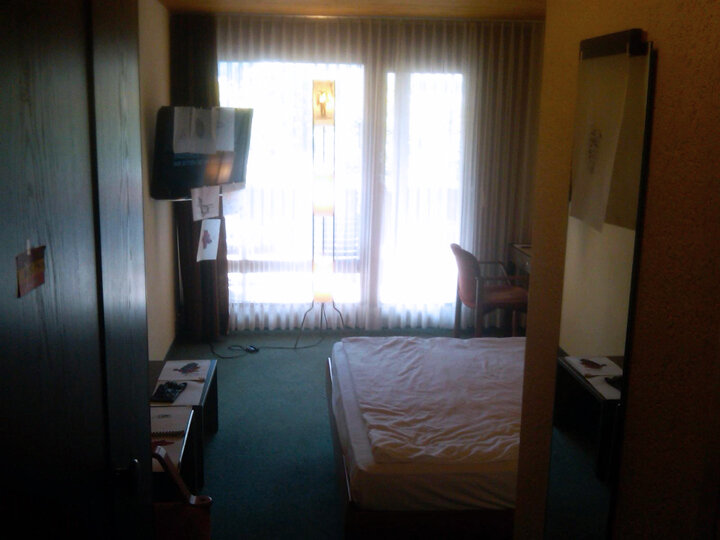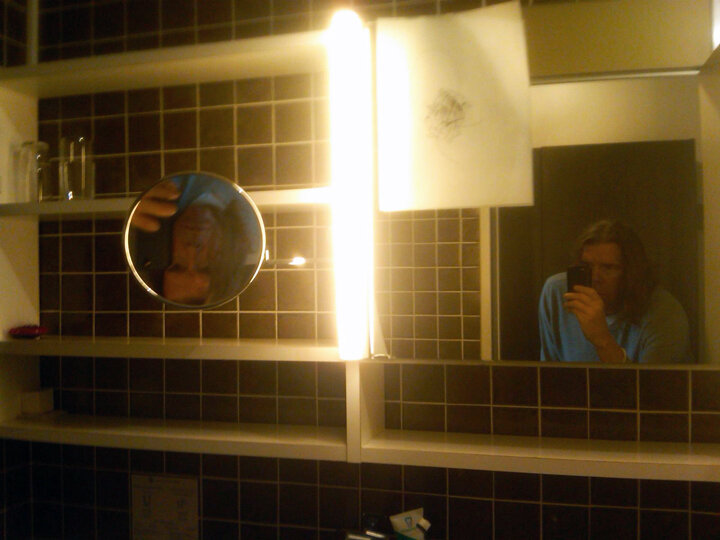THE NEW STUDIO [2]
[We continue our inquiry into the essay by Daniel Buren, “The Function of the Studio.”]
Buren supposes a function for the studio, a function which he himself abandoned early in his celebrated career. After a search of available properties, and probably a lot of informal inquiries within the networks available to him, Buren apparently determined the cost of Parisian productive artist space in the late sixties prohibitive. His calculations took into account the size of studio he could afford relative to scale of the pieces he wished to execute. Most so-called working or professional artists know the usually disheartening routine. The major art market cities predictably contain concentrations of artist studios. Locator services, private ventures or public administration, often through mature arts commissions, connect artists and studio proprietors. The means by which artists find their studios has evolved substantially from the end of the sixties ‘til now. Word-of-mouth, Craigslist, listings kept by art departments are common resources artists can use to find a studio. Still, even in artsy hot spots (Bushwick), the process can be bewildering for students fresh out of art school, “newbies,” “wannabees,” and romantics dreaming of a break into an active cultural market or scene. All sorts of predatory schemes exist to take advantage of the stream of fresh entries into the art world meat grinder. Of course artist-winners scoff at the naivete of the artlings, especially if the storylines of both sets (winners/losers) are divergent only by the luck of lottery. The edge goes to trust-funders, generational artists, those with academic pedigrees (Yale) that come with advanced networks of contacts and alumni and other privileged sub-cohorts. The game is not only who you know, but also who knows you, and the winning difference frequently boils down to leverage, or favors called in. Meritocracy is the myth that drones over the topology. The system is rife with all kinds of inequality. Who gets the boost is a function of selectivity, not skill, talent, whatever that might be, or - God help us - genius. Sexual politics inevitably come into play. Ugliness is a liability, absent mitigations. Buren’s world of art is a tough racket. Just getting started in the world of the artist is an astonishing feat for most, because there is no systematic logic or transparent progression from bottom to top. The art industrial system is in most of its infrastructure unregulated, and its protocols nonsensical to casuals. Many opportunities are hoovered by stale network operators who are adept at surviving in the shark tank, usually by their horizontal portfolio diversification. The old art world crocodiles fiercely defend turf, once they acquire their territory in teaching positions, in informal cliques, in gatekeeper roles, and as consultants or mentors. They dole information within their petty hierarchies of dominance, using covert whisper campaigns to great effect. These wizened, mostly mediocre practitioners do as much damage as anyone within the nebulous and variable frameworks for art-related careers, clogging the stressed and precarious labor markets for arts and culture. The perpetuation of wasteful norms, expressed in countless mundane episodes by which mediocrity is elevated in the system - that is their job description, in a nutshell. You would not guess at those grim realities, at your first day in a ridiculously expensive BFA or MFA program, much less a painting class at the local community college.
“Liberty,” in process in the garage of my parent’s home in Beckley, WV (1986); 1/4” steel, railroad ties, barbed wire, spray paint, acrylic and ink.
The migrations of artists from space to space, district to district, city to city, country to country is a dimensional phenomenon with many component parts. Factor in artspeak buzz machines, the proximity of wealth, evidence of cultural emphasis and investment, natural and historical attractiveness, institutional and academic infrastructure, public arts policy, the ambient social Scene (fashion, music, food, etc.), affordability in housing and other essentials. The general topic of Creative Class linkages with the artist studio was introduced in the first section of The New Studio. The reference would be incomprehensible without a balancing perspective on the booming artist demographic over the past half century. An excellent resource for just such an alternate view is Greg Sholette’s book Dark Matter. Sholette’s recounts an often sobering assessment of “the world of art” for almost everyone who participates in it. He presents the case, with supporting data, that demystifies the sappy, affirming cultural propaganda and addresses the effects of an art and artist market built on scarcity models for supply and demand on the masses who churn through the cultural consumption rackets, and by doing so sustain them. Often the search for a studio is a middle step for the artist who enters the art labor force and whose career will almost certainly not be acknowledged in the offices, compounds and halls of art power, and whose art will never appear on the walls thereof. The demographics of artist-dreamers are staggering. Well over a million people claim to be artists in America alone. Compare those numbers to the employees of the US Armed Services. We have more artists than soldiers, actually. How many artist studios are for rent across the nation to serve the needs of self-identified artists, altogether? Data of this kind is inconsistent and, when available, disheartening. Of course, given the property owner-favoring disparity between available space and tenants, the business of supplying art studios to demanding hordes of artists is enjoying a localized boom! Studios we learn can be converted storage units, boxcars, trailers, cabins in national parks, basements, garages, mobile homes, sheds, school houses and all kinds of destitute or otherwise un-rentable structures, as well as the open-air kind, which actually is artist space where there is none, the non-existent studio. Which brings us full circle to Buren’s Parisian dilemma.
The artist’s hand, after a FunkShunArt painting session, in my dorm room at the University of Notre Dame (ca. 1982 or -3). My roommate eventually got fed up with my splattering everything in the tiny two-man and strongly suggested I look into art classes and procuring studio space in the art building. Which I did (my first).
What was Daniel Buren’s solution to his artist studio problems? Buren conceived and formatted the seminal projects he would effectively undertake, by envisioning the city-as-workplace sufficient for realizing his art project. The Situationists established a notable conceptual-lineal precursor to the artist’s move (for background look HERE). Buren’s vision and its timing were fortunate by proximity. The upheavals occurring in Paris informed his strategies and tactics. Buren clearly possessed (and still does) a keen contextual sense. For instance, the artist’s striped sandwich board performances and pasting campaigns blended nicely with the informal street publicity and commentary that enlivened the visual textures of the city at that moment. Buren further possessed (and still does) the creative social intelligence that translates into a smooth narrative justification for innovative and opportunistic artistic action. He abandoned a signature identity for the tactical anonymity commensurate with his enterprise. By doing so, he centered his stripes and their rationale soundly within an alternative or outsider track, one that however conformed with contemporary notions of collectivity, sublimation of the heroic, elevation of kitsch, in his words, the “banal and stupid,” against the backdrop of elitism.
Occupy Museums (ca. 2011)
Buren’s integrated approach played (competed) with the top-down dimension for the world of art, without attacking it overtly. Perhaps it is useful to juxtapose the his method with some of those deployed during OWS, three decades after Buren penned “The Function of the Studio.” The occupational premise of the 2011 uprising is more directly relevant to the discourse on artist space and production, the physical and material aspects of the intermingling narratives, but also to the existential, metaphysical and virtual or immaterial threads that pertain to creativity in general, and free expression in particular. The overarching narrative of Occupy, pitting the 99% against the 1%, is absent, as far as I can tell, in Buren’s critique and work. Instead his artist persona fortifies a studied ambivalence. In due course, presenting difficulties for a recursive conclusion about his original intent and the longevity thereof, Buren is now a prototypical figure one might cite to represent the 1% artist in a 99%er art world. The evolution of Buren, from anonymous ‘68er radical, to a branded artist for the global elites is - to perceive it through the lens of desire, through the eyes, say, of a careerist early-stage art player - iconic, a template, even. The ironic element in Buren’s artist biography is automatic striping, the consistent, sustained visual trope that he deploys throughout the decades, with a few forays into other decorative motifs, techniques and gestures. The Stripes are Buren’s brand, and he has proven that the compositional lowest common denominator can be the linchpin for a contemporary art champion. Yayoi Kusama does the same with her dumb dots.
Seth Wulsin at work during Spatial Occupation at Hyperallergic offices, Williamsburg, Brooklyn NYC (2012), one of many interventions and direct actions undertaken during Occupy Wall Street by working groups to develop alternatives to the commercial models of art production. Much of the visual impact of the movement emerged from committed efforts to foment practical networks to disrupt status quo models of the arts and cultural command, control, extraction and exploitation complex.
cAn interesting conjecture arises from the reflections of Buren on his own artistic trajectory. What if he had found an adequate artist studio for a nominal fee prior to his quasi-radicalization? The hypothetical does not necessarily serve as subtext for the content of Buren’s anti-imagist creations (the stripes). Nor does the query explain his attraction to the basic Pop/Op formalism, which promotes the reduction of the artist’s “hand” in the presented image. An ambitious and clever artist usually samples from many sources to arrive at something like a “signature style,” or in Buren’s case, an anti-signature style. Causation in art follows a concept-to-object progression, in an art Hegelian historical formula. Buren strenuously rejected the readymade sensibility, although this intellectual stance is arguable at the practical level. He points to the circumstantial (‘68 Paris) as an inspiration for his creative action (not his verbiage - PJM), which implies a complex, multi-faceted and ambiguous artistic/political/economic/social intent. This mutable motivation is expressed both in Buren’s choice to make Paris his “studio” and to resort to machine processes to fabricate his “art,” which contains some procedural contradiction, even taking into account the guerilla tactical “use the enemy’s power against it.” Were Buren’s choices, if that’s what they were, a function of expediency, revolutionary theory or some other aesthetic principle(s)? What are we to make of his claim to have created the genre, “in Situ?” Or his resolution to leave the “art” designation for his work to the society against which his often anonymous interventions rebelled? In the context of a conversation about the art studio and its function, we might ask to what degree the artist studio function affects artist function? Such a proposition raises a string of unresolved issues, questions having to do with: validation of the art and the artist; the efficacy of the avant garde; the objective relevance of theory/aesthetic/philosophy as justifications for visible things; and more. Following the thread of these questions, naturally the conversation turns not only to authority/authorization, but the subtext of individual and collective motivation. We can trace Buren’s case and see the outline for all the Really Big Questions [RBG] that adjoin the phenomenon of art: Why art? For whom does the artist make art? What purpose will (or should) art serve at the communal level? Is the relationship between art and society reciprocal? Should have Paris in 1968, by some mechanism of governance or administration, provisioned Daniel Buren a proper studio, and would he have made expressionist paintings with patterned elements instead of reductionist or minimal images, consisting of just stripes? His work between 1964-66 suggests that possibility. If we stipulate that provision for Buren, what kind of society would be necessary to manage the exchange? Would the exchange engender a specific kind of compensation, its own economy? Or would a new economy be necessary to manifest the new model for artist studio distribution? What would that economy look like, and what would the society containing it look like? Would a new society need manifesting to bring about the reformation of artist studio distribution? Woven through all these queries is this one: Is the artist studio a sign of the artist, or does it work the other way round? What does, or should, the artist studio signify for the artist? On the more practical level, is the artist studio a manufacturing facility, or a theoretical device?
AFHstudioBK #2 (2014)
In a 4D analysis the artist life itself can be reviewed as a time-based medium. The net results of this mode of study add a wrinkle to the canonical method, established centuries ago in Vasari’s groundbreaking 16th Century book The Lives of the Most Excellent Painters, Sculptors, and Architects, or “The Lives.” The history of art is the target of revision in the 20th and 21st Century. What and who are “great artists?” is a reformation project for many ideological, political and economic agents, who are motivated by a host of reasons, material and immaterial. MoMA,* leading a trend among the world’s elite art presenters, has famously reorganized its voluminous exhibition spaces to accommodate new definitions of greatness in art, which include ideas that art need not be great at all, because it must also serve other needs (social, political, cultural, personal, emotional, psychological, and so on). The “New MoMA” landing page online tells us, “More than just a physical expansion, the new MoMA is a rethinking of how we share art with you. We’ve reinstalled the entire collection to share exhilaratingly broad views of the art of our time in a way that is always evolving.” Glenn Lowry, the David Rockefeller Director of MoMA adds, “The real value of this expansion is not more space, but space that allows us to rethink the experience of art in the Museum.” MoMA’s substantial shift is representative of a global perspective for art. It also reflects the market dynamics discussed in the first part of The New Studio. The Process of Reassessment, let’s call it, is all-directional, media- and network-facilitated and non-recursive, in the sense that so many players have an interest in disrupting, capturing, overturning, co-opting, utilizing, profiting from, defining art in new terms that the project of enumerating them approaches absurdity. It is much easier to ask who would prefer to retain a basic code for art attuned to the idea of greatness (first codified perhaps in The Lives), because that list would apparently be short indeed. Fortunately, imagining a studio for type of art project exemplified in The New MoMA is being beautifully done for us. I am referring to “Art in the 21st Century,” and other programs in that vein, promulgated in what remains of the “old” art press, and its new media iterations. Coincidentally, Art 21’s format parallels Daniel Buren’s (age 17) student project described below, and in his essay “The Function of the Studio,” in both positive and negative aspects. HERE is the Oxford University online nexus, sharing the same title - “Art in the 21st Century” - which conveniently provides a terrific synopsis of the prime narratives underpinning the New Art World. One wishes that the page, and all the media rhizomatically intertwined in the prospect of this purportedly vital art reformation, would link to Thomas Piketty’s Capital in the Twenty-First Century. Without a knowledge of Piketty’s material, the world of art is practically incomprehensible. I find it ironic in the context of our concentration on Buren that Piketty is based at the Paris School of Economics.Much of global newness, good and bad, is Parisian. The city is home to the Pompidou and its contemporary programs, but also the Mouvement des gilets jaunes; Macron and the Arc de Triomphe de l'Étoile! I do not doubt that the contradictions in Buren’s art and life to some degree are a product of the milieu.
*[As noted, Buren’s essay “Function of the Museum” will also be addressed, later.]
AFHstudioBK #3 (2017), “4D VyNIL” open studio event
The work is thus totally foreign to the world into which it is welcomed (museum, gallery, collection). This gives rise to the ever-widening gap between the work and its place (and not its placement), an abyss which, were it to become apparent, as sooner or later it must, would hurl the entire parade of art (art as we know it today and, 99% of the time, as it is made) into historical oblivion. This gap is tentatively bridged, however, by the system which makes acceptable to ourselves as public, artist, historian, and critic, the convention that establishes the museum and the gallery as inevitable neutral frames, the unique and definitive locales of art. Eternal realms for eternal art!
MoMA (circa 2010-11) by PJM
The main drivers of the world of art are value and means, values and meaning, as they connect to power, wealth and reproduction plus preservation. The passage from “The Function of the Studio” above is poignant, given that the “entire parade of art,” coinciding with Buren’s art career, has been, in great measure, upended. The ownership class for art has not. Over that time (ca. 1964-2020), his engagement with the macro-industrial art complex is repeatedly demonstrable, and with few glitches, seems to be vertically progressive, in common measures of success in the art domain. What are we to make of the correlation? Is it direct, coincidental, or something more complicated? As noted above, Daniel Buren may have adopted the avant gardist vestiture, but the position was hardly static. At this point Buren is an establishment cultural figure and very successful creative professional. While he is comfortably ensconced in the role of collected and public artist, with a terrific portfolio and excellent representation, he has not been forced to jettison his revolutionary affinities. The evidence is readily available in interviews, statements, biographic features, texts that accompany his exhibits. On the contrary, despite inherent contradictions, his views on the world of art and his durational interactions with it serve as Buren’s conceptual provenance, his credentials for authenticity, his bonafides. He enjoys the best of both worlds: the world of art; and the world of the artist, but also the elite and avant garde art worlds, and to that point, can do what art he envisions, with ample funding. The artist studio as such is no longer an issue, ostensibly. At this point, the problem of the studio for Buren is resolved in his favor. His global operations and income are facilitated by the most powerful individuals and entities. There are few art figures who enjoy the widespread popularity Buren does, even if he is not what one would call a “household name” in most of the world. In that respect one might attribute his balanced and settled status to Buren’s artistic integrity and perserverence. Even now, the once-a-rebel artist does not pander to publicity - and does not have to. From another angle, though, Buren’s oeuvre suggests another quality: compromise; and a critique of the compromised and compromising artist is evolving, just as MoMA’s curatorial methodology has.
[An OWS arts & cultural sampler (2011-12)]
“The Function of the Studio” was written and published after the fact of Buren’s early interventions.. in analyzing the essay itself, with the benefit of hindsight, is it appropriate or helpful to incorporate the long history of Buren’s production, as a matter of duration, into the framework of textual review? Can “The Function of the Studio” withstand the scrutiny of the Historic Eye, or even a critical hermeneutical review? Perhaps, but the necessity of meaning is such that unbinding the author’s performance from his ideas and systematic observations can be accomplished without harm to either, because both can be reassembled seamlessly in imagination and experience, with time and persistence. For instance, some of Buren’s activities (e.g., the regattas), can, according to the artist, be replayed, possibly with endless variable possibility, like musical or dance performance. Other conceptual artists - Sol Lewitt and his wall drawing/installations have put forth similar rationales. It is a convoluted, complicated matter of perspective, logistics, but most importantly time and circumstance. The field of aesthetics, and the artist’s voice within it, can inform the visible aspects of art and add value to viewer’s physical encounter with the art object. The oral tradition to art and for artists is only useless to those players who seek to negate the agency of artists in their creative labor, or to supplant the origination of art with a superimposed narrative, fictional or not. In short, how does the art and theory of art carry its age, and is anyone responsible anymore for watching art and reflecting art thinking through the rearview mirror? This is more a Media Philosophy concern than an aesthetic one.
AFHstudioBK #4 (2018)
The ideology of function is complex. Must the art, artist and studio be rendered in or consigned to the terms of functionality (as framed by Buren in his essay), to be understood, or just better understood on the horizon of common labor? Philosophically, is the studio a complicated location for doing, being or becoming, or all these things simultaneously? Or is the artist studio something else entirely, perhaps an expression of the political, the social, the psychological, anthropological, spiritual? I would argue that a case can be made for the artist studio being a metaphysical portal, as much it functions as factory for art industrial production. The discovery of “the oldest ‘art studio’” in a 100,000 year-old Blombos Cave near Still Bay, South Africa might reinforce my argument, which posits artistry and humanity in a single continuum. The remarkable story reassigns the discourse on artistic production away the cave’s original, mysterious facts and theory, to a combine of scientific discipline(s) - such as chemistry, geology, physics, etc. Our imaginations are indoctrinated to explanations, rather than or in conjunction with Humanities-rooted analysis arising from political, social, aesthetic, economic study. The impermeable past is not allowed its freedom to exist as such, and instead is colonized and mediated, named and numbered.
From my friend Sean’s Instagram.
The profound shift in discursive thought about artist studio production informs a plethora of new directions, some long-standing, others novel. To deconstruct the Media Lab and “Maker’s Space” is to learn how the artist studio is no longer a placeholder for ideological function, it may just be precursive sub-architecture for technological advancement within the architecture of creative, practical education. To unpack the diffusion or dispersion of art production is to analyze the methods by which art is utilized by Civilization and how the art impulse or urge can be manipulated so as to indoctrinate a citizen systematically, absent art itself. The disappearance or extinction of art may not be surprising after all. The citizen more and more is a construct in situ. The World of Civilization is a an artist studio and everyone is an artist and socially acceptable work of art. Undermining this prognosis is the biology of humanity. We are optical creatures in great proportion, and our processing power is streamlined to optimize the interpretation (processing) of the seen, and as fast as possible, turning the visible into decisive action. It is a matter of survival, hardwired in our animal DNA (which we cannot perceive with the naked eye). We are not just naked apes, we are naked apes with naked eyes and huge brains, and fancy nervous systems.
Art for Humans Gallery Chinatown (2007) - closed gallery/studio transformation
1. the definitive place of the work must be the work itself. This belief or philosophy is widely held in artistic circles, even though it dispenses with all analysis of the physical space in which the work is viewed, and consequently of the system, the dominant ideology, that controls it as much as the specific ideology of art. A reactionary theory if ever there was one: while feigning indifference to the system, it reinforces it, without even having to justify itself, since by definition (the definition advanced by this theory's proponents) the space of the museum has no relation to the space of the work; or
“If Stripes Could Talk”/ The New Studio #2 [Homage to Buren (January 9, 2020 - 7:37 PM PST)]
A 4D-fluent analyst pursuing answers to an anti-aesthetic ideological conundrum - those introduced above aggregate as the inversion of a fictional certainty - will trace the artistic immaterial beyond the dedicated spaces in which actual art might, should or is expected to happen by focusing on the virtual and its linked art object outside the parameters of hybridized designation. Buren attempted this in his early studies in a limited or anecdotal way. New modes of seeing a thing can arise from recontextualization, a technique at which Buren is adept. This weaving of storyline and craft reflects or parallels the evolution of a 4D-infused, civilized perception. Such is the portability of art, now. The cave, the studio are institutionalized in the lab and re-purposed creative space. The matrix of traditional constructions facilitating artist work is being colonized by the consumptive internal mechanisms within the motors of speculative Progress. The phenomenon is projected through constellations of dogmatic hierarchies that acknowledge the value of art (e.g., converting STEM priorities to STEAM initiatives) by throwing a proverbial bone to the loud, culturally inclined academic policy planners, meanwhile distilling art into a recognizable package. Lost in these mechanistic convolutions is the prospect that art is specific and the artist pursues a specified mission, which is complete in itself. Art is a thing, and it is a thing that artists do. The artist studio itself has no function, except to facilitate what artists do. The concept of a functional artist studio is a fallacy. Seen through this narrow interpretive lens, many developments that derive their impetus from an idea of art that is ultimately fungible prove incoherent and false, upon close inspection. The project of a creative complex within corporate entities is not identical to the art studio mission. An artist in the studio one might assume is convinced about the viability of art, but that is not always true. Most any studio artist knows the struggle to persevere against a host of doubts, pressures, disharmony, internal and external.
“Bushwick Manifesto,” a temporary contemporary installation (2011)
In many instances, the creativity industry generates as its product things (machinery, immaterial content, doctrine, etc.) that are blatantly anti-art in every aspect. Tools of war come to mind. So do conformity and compliance. The fallacy of artist studio function centers in attribution, conflating design and architecture with an artistic output that form cannot assure. One must wonder if the confusion within the false norms is willful, ignorant or accidental, incremental and cumulative. What is certain is that the usage of designated creative space is typically impervious to artistic intent. If the establishment of a functional artist studio ensured the creation of art, any occupant would do. Assuredly, this is a false conception. On the flip side, the industrial fetishization of the art studio is embodied in programmatic entities like The Elizabeth Foundation, ISCP, Sharpe-Walentas, Chashama and others. One of their functions is to situate the artist in a state of dependency on philanthropy, instead of a democratic option like the WPA or AIA programs. These front operations serve to displace any comprehensive public arts program that could efficiently rationalize the almost completely illogical world of art. They are not signs of a thriving and healthy arts ecosystem. They are expressions of top-down power in largesse, of noblesse oblige. They are cornerstones of false authentication protocols for global anti-art culture. The product is systematic, corporate NGO homogenization of art. The medium is the transitory white cube artist studio. The management functions to facilitate art are network security, consistency and quality control. Only acceptable dissent is tolerated.
AFHstudioBK #2 (2013)
In the first section of “The New Studio,” the discussion is situated in a survey of “the world of art,” as Buren framed it, and a rudimentary examination of “the world of the artist,” between which the art transits within a formal transactional economy. The prime, triangular movement of the economy is situated within the gallery, museum and studio, with additional contingent dimensions extending to private collections, and possibly the critique. The auction house is not mentioned, probably because at the time he wrote the text, Buren’s stripes were not a bright commodity in the secondary market. That would come later. Buren describes dramatically the fate of art outside the exchange. Art that is not projected into the world of art will occupy unproductive area in the studio, be invisible... Its maker may starve. So, unexhibited, unsold art in Buren’s estimation is a sign of creative death, tantamount to costly waste in managerial terms.
In 1973 Buren published another essay (noted in “The Function of the Studio” citation) titled “The Function of an Exhibition.” The article focuses on Prospect 73, and the artist’s involvement with and views of it. The world of art at that time would hardly be recognizable, if juxtaposed with today’s version. The scale is not comparable. Buren concludes “The Function of an Exhibition:”
As for my painting, it may be found at Prospect or not, as at Documenta, at the Berne Kunsthalle, as in the Guggenheim in New York, invited or rejected, admitted or censured, for although it is fundamentally mundane, no more than an attempt can be made to exclude it from the present, since it also reveals present ideology.
Some discussion of mechanical procedures could elucidate the flaws inherent in Buren’s notion that artistic value for ideological revelation negates the specificity of exhibition venue, and the various protocols governing venue function. Now the artist studio is a node in the circuitry of the networked world of art. Successful artist studios can operate independent of the artist’s presence. Such artists are basically factory managers, or consultants for the teams they select. Much of artistic production at the top level is outsourced to specialists, or to production houses/factories that hire those with knowledge, skill and time the artist does not possess, at a savings if possible, or at premium prices, if that helps sell the finished art. Factum Arte is one of these services. This is the New Studio.
Currents, Flow and Reproduction Series #59
4D Quantities Series #14 [Meta-Element (Portal)]
Vinyl on Canvas
12" x 9"
$950
The function of a studio, an exhibition, or a museum, or the artist and art can be framed systematically, but the exercise is frail in its substance. Is ideology systematic? Where does market logic intersect the world of art and artist? In conjunction with Voile/Toile–Toile/Voile (Sail/Canvas–Canvas/Sail) at the Walker Art Center (2016), Buren was interviewed by curator Pavel Pyś. At the conclusion of the excellent, wide-ranging discussion (immensely helpful as resource for this essay), Buren re-asserts in response to an audience question the artist’s view that all presented art is political. That view is not at all unique, and is representative of revolutionary dogma associated with much critical theory that emerged from the constellation of “‘68er” cultural movements. Given massive expansion of both the world of art and the world of artists, since 1968, a phenomenon that appears global, for years enabled by the Net, how accurate is the assignment of the Political to the artist studio or to any of the other base elements comprising the worlds of art and artists, as understood by Buren when he wrote his seminal essays? Rather than the short-term extinction of typical structures pronounced by Buren at the end of “The Function of the Studio,” for art and art creation, the world has witnessed the expansion of creativity to encompass an impressive diversity of practices, all of which society has accepted within an inclusive conception of art. This promiscuously practical eruption of all things artistic, afforded societal recognition, over the period (say 1958-present) has necessitated a reformation for the idea of the artist studio. Buren followed his comment about the political and art, by characterizing most of art as “reactionary,” not revolutionary. Can we distinguish the two, when confronting the political within an ideal artist studio, as specified in Buren’s sketch of it? The prospect is complicated by Buren’s given parameters for art, since he distinguishes the private and public spheres, and art as a transitory entity migrating between them. Ostensibly Buren contrives art to be contextual, affected profoundly by environment. The destabilization of art and artist is not only environmental. It can be habitual, a projection, a reflexive urge to consume the world by hacking it with “visual tools” - Buren’s term. Does his persistence in striping, an automatic gesture, provoke a reaction, or a revolution? When he stipulates identical* art, is he forecasting his lifelong visual strategy?
1. all works of art are absolutely the same, wherever and whenever produced, by whatever artist. This would explain their identical arrangement in thousands of museums around the world, subject to the vagaries of curatorial fashion;
[^ Selections from documentation of “Struggle , Mission, Task,” an open studio event which took place at Hotel Metropol in Saas-Fee, Switzerland (2011), in conjunction with the European Graduate School summer intensive. Dedicated to Paris Ionescu, RIP. Catalog of drawings is HERE.]
One could guess this would be Buren’s modus operandi. It would therefore represent a conclusive aesthetic deduction, complicated by anti-aesthetic induction. Buren seems willing to play at the role of artist-imposter, whose “art” is serially artificial, as a machine function, an objective simulation sequence that eventually accumulates the qualities of the simulacra, like a database. What pushes someone to such extremes, given countless alternative paths to artistic longevity, if not glory? The origin of the emotional content denied by the mechanical technic of Buren might derive from a formative student project, recounted in “The Function of the Studio.” Rather than sharing memories about his own original studio experience, he instead recalls a tour of a variety of artist studios in France, part of an analysis of “provencal painting from Cezanne to Picasso.” Buren concluded through this series of encounters a connection between “reality/truth” that for the art and artist “existed not only in terms of the artist and his work space but also in relation to the environment, the landscape.” He communicates a deep, romantic bond with the original configuration for production, and, as he follows the art through the, he perceives that bond to be reduced through the exhibition process. Eventually, Buren negatively characterizes the effects of removing art from the studio in its initial phase, as “deception.” The deception in the modality shift left him disillusioned, even if it took time to unpack why. In Media vernacular, the issue discovered by Buren-as-young-artist could be attributed to problems of both transparency and authenticity. Subsequently, Buren deconstructs the technical disparities between art in its original and exhibit states, elaborating on the supply and demand market dynamics that drive the separation of art from its roots for the purposes of consumption and survival of the artist and preservation of the art. In that assessment, Buren likens the studio to a commercial depot, an operational facility. Of course this is not the only possibility. In the next section we will explore the media phenomenon of the artist studio in more depth, starting with the example Buren used, Brancusi’s studio. We will also delve more extensively into the Open Studio model, and its non-commercial, voyeuristic function as artist zoo.
Caitlin performing in the cabin studio, Spicewood, TX (“Entry,” 2005)

![Currents, Flow and Reproduction Series #60 4D Quantities Series #15 [Meta-Element (Portal)] Vinyl on Canvas 12" x 9" $950](https://images.squarespace-cdn.com/content/v1/501abbd4c4aaab20160f16af/1578334852107-HVEYZKD21UIF6H531T51/cfr60.jpg)







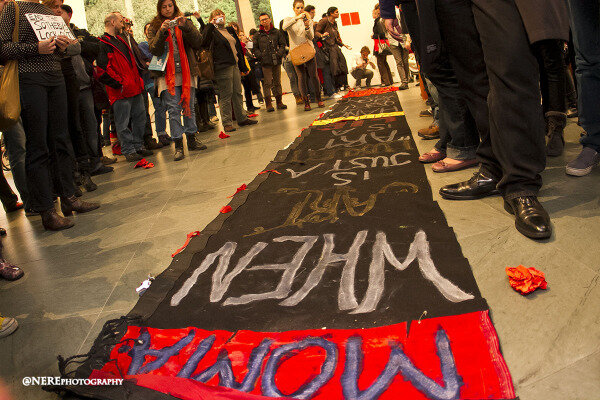
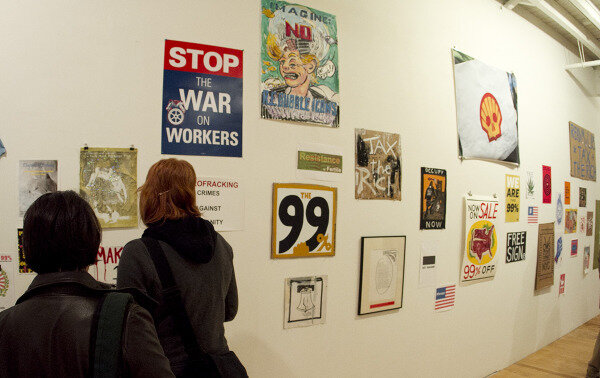
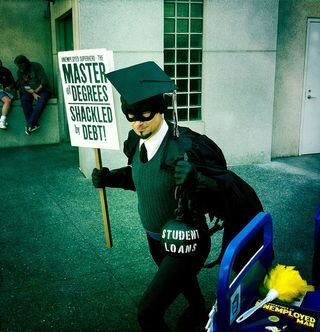
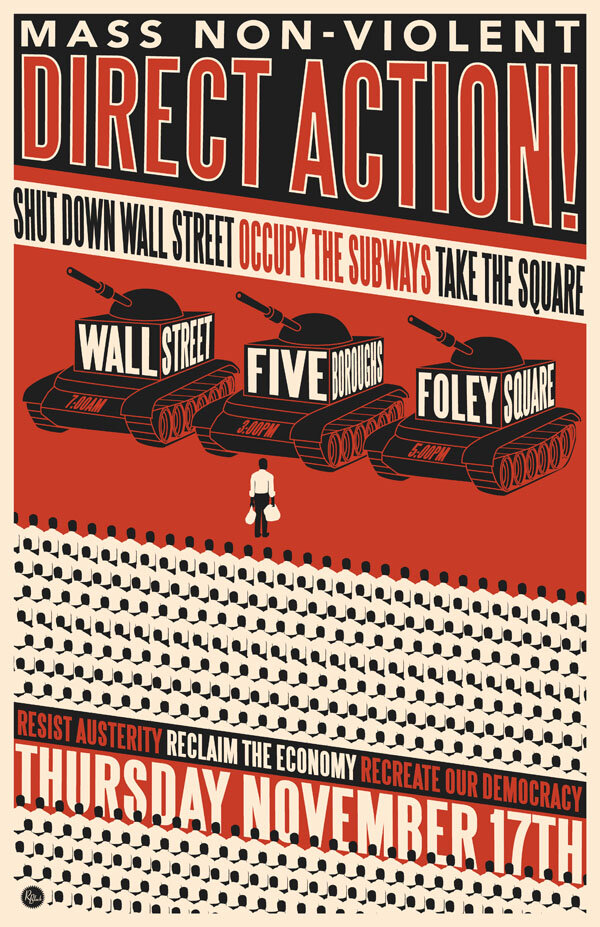


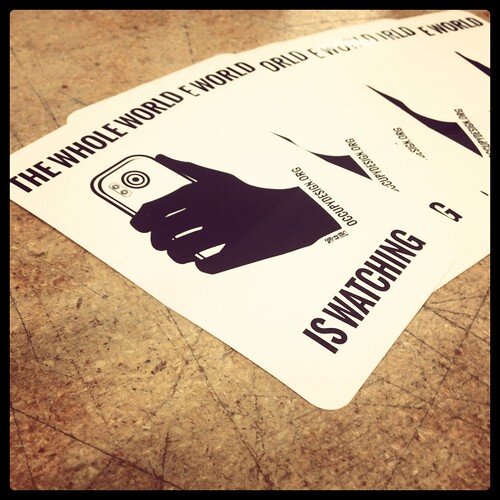
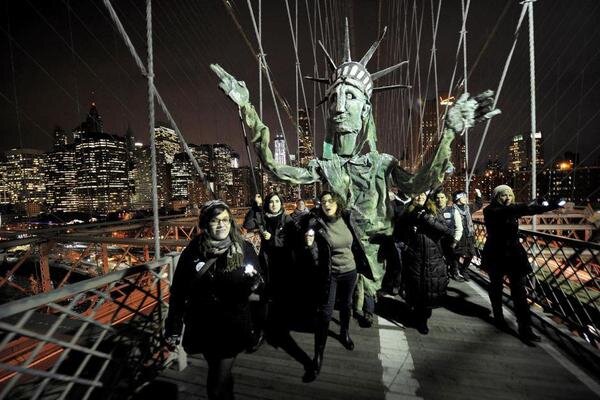
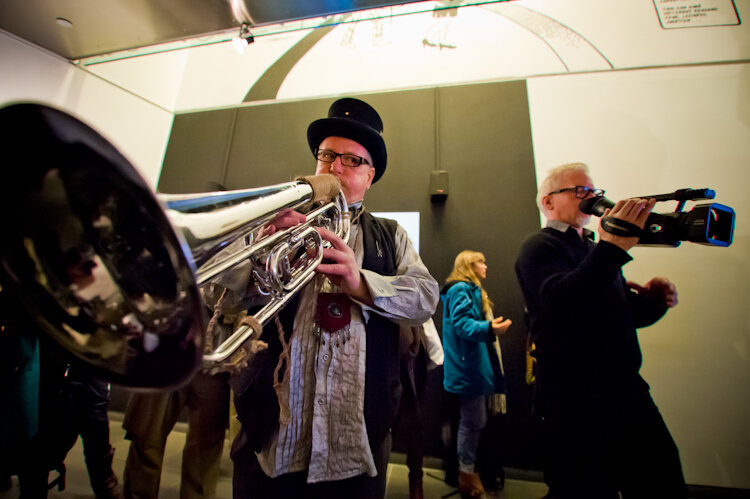
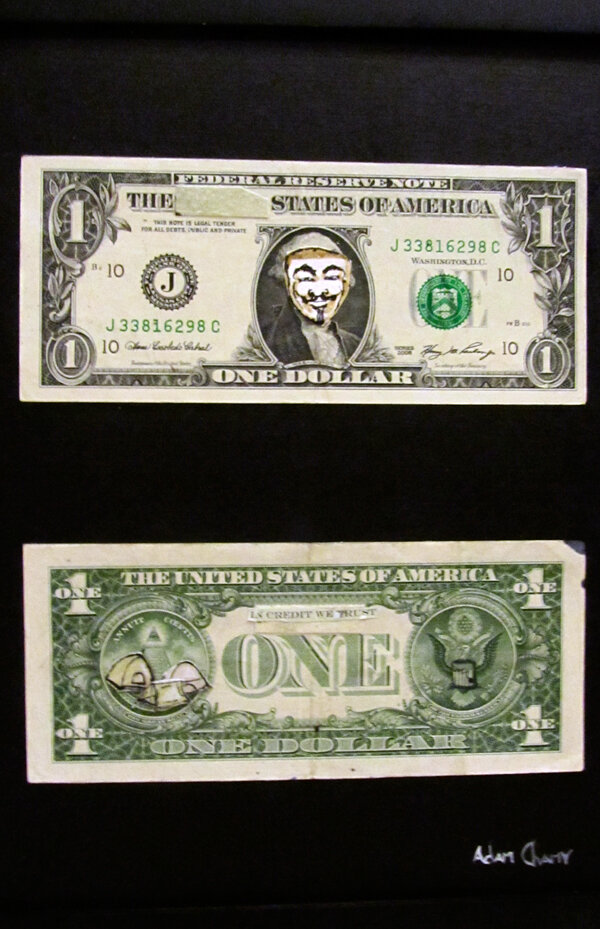
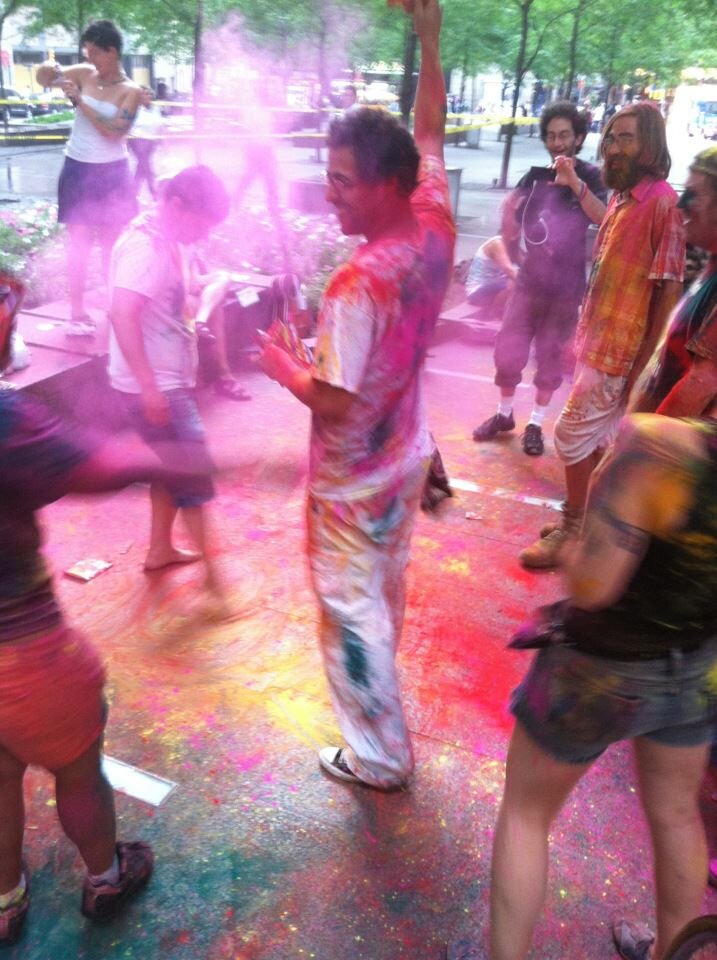

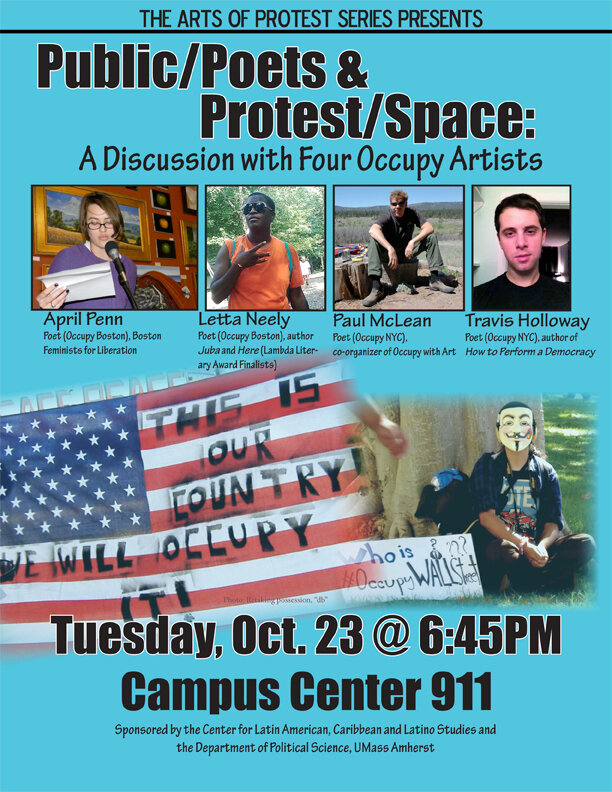
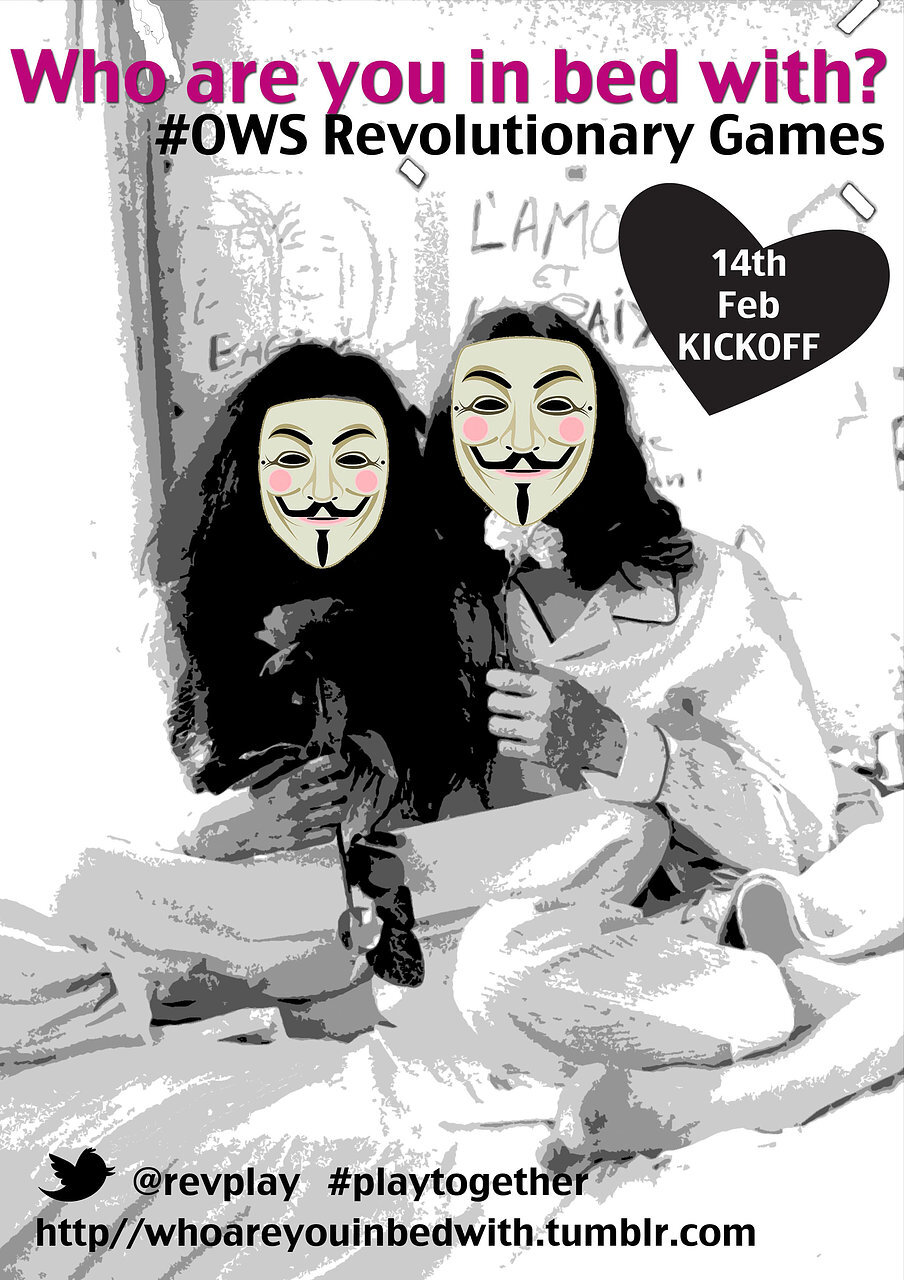
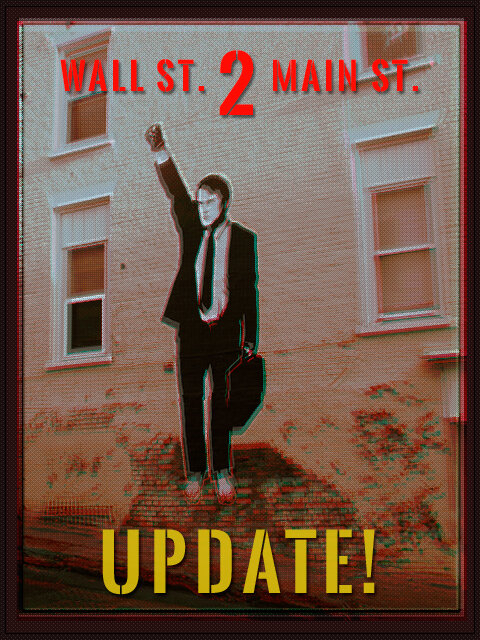


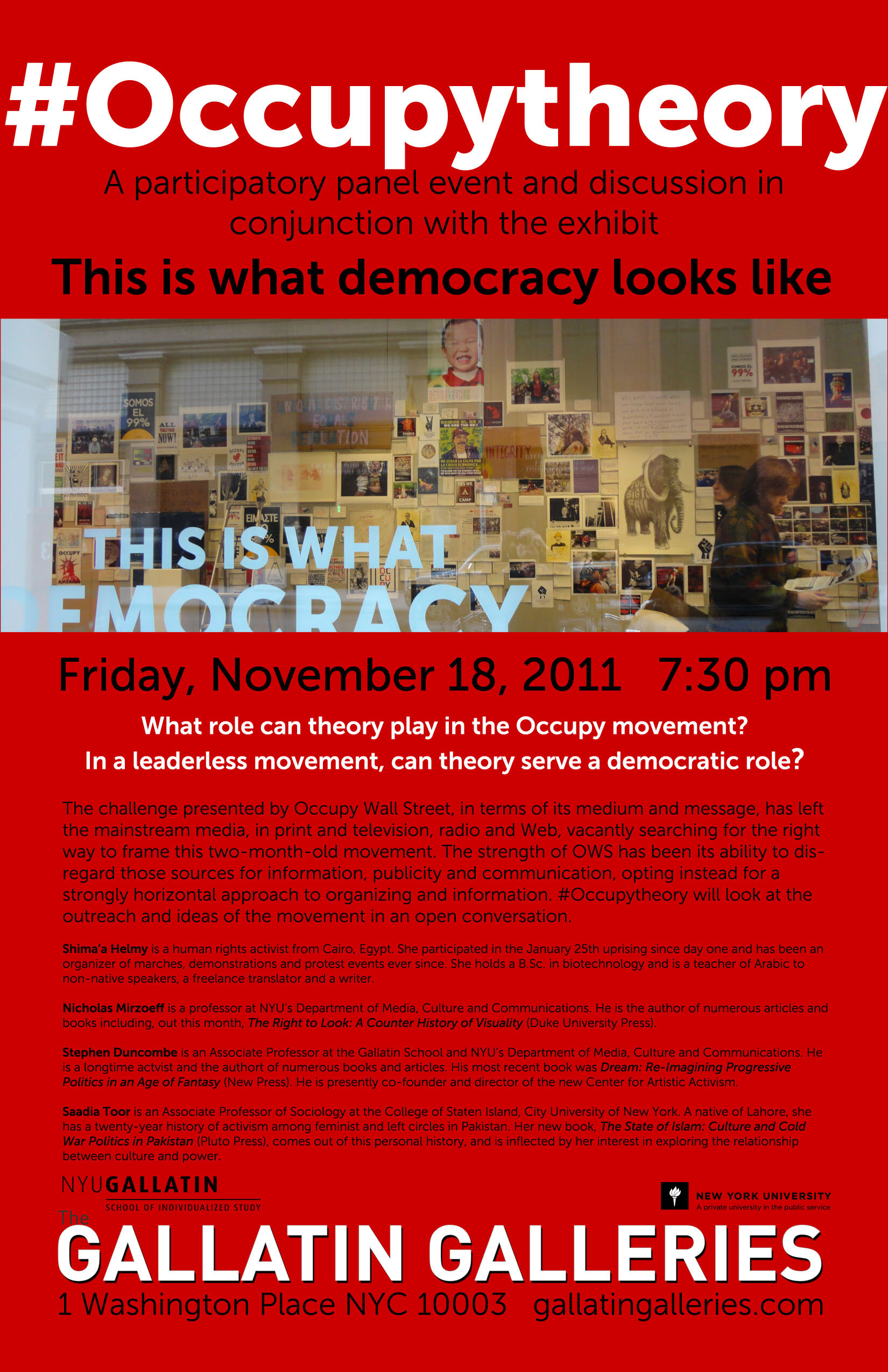
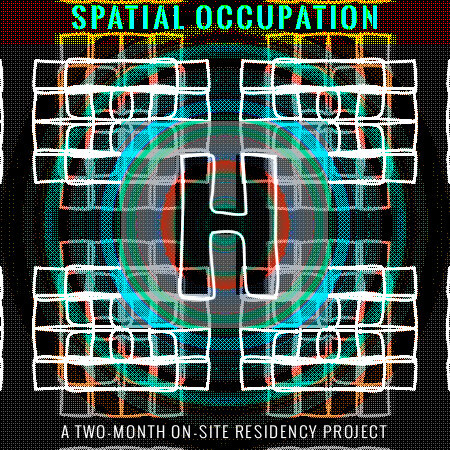

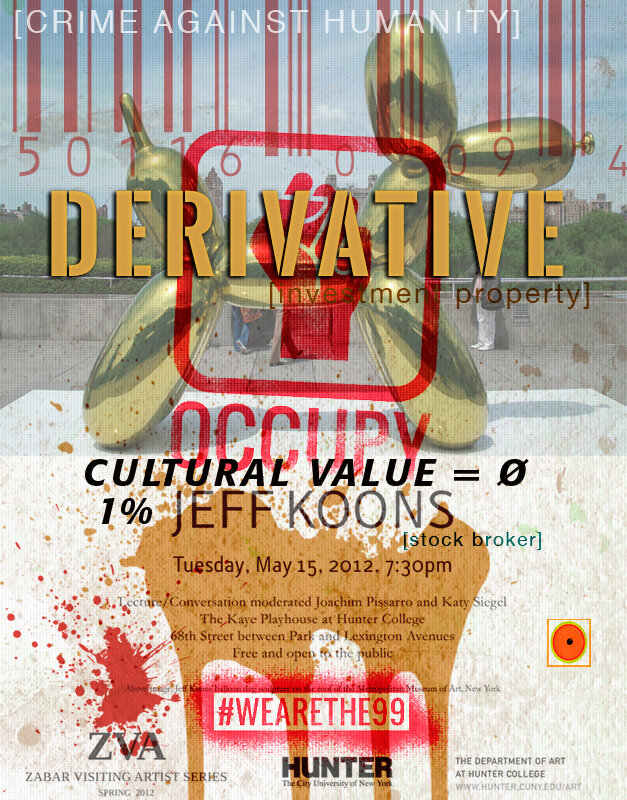
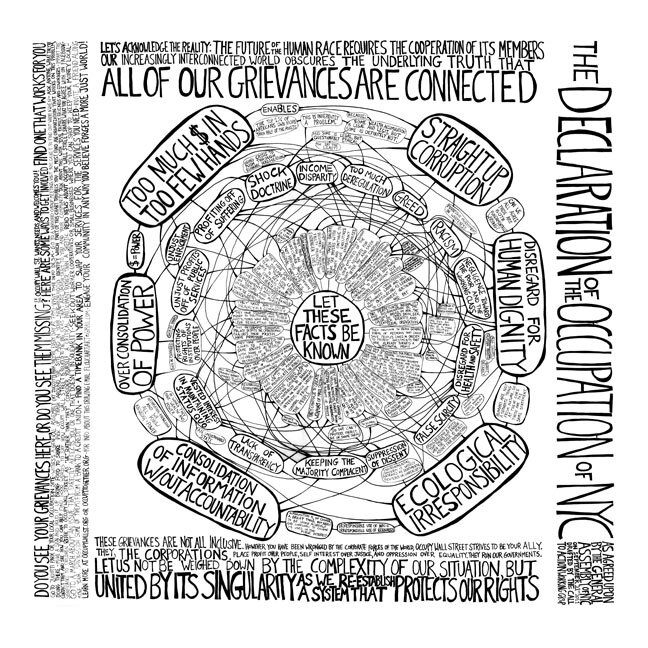
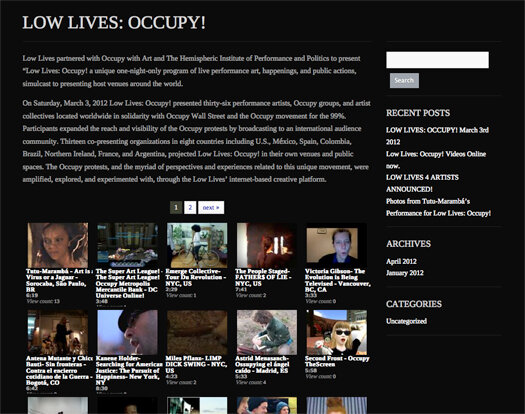
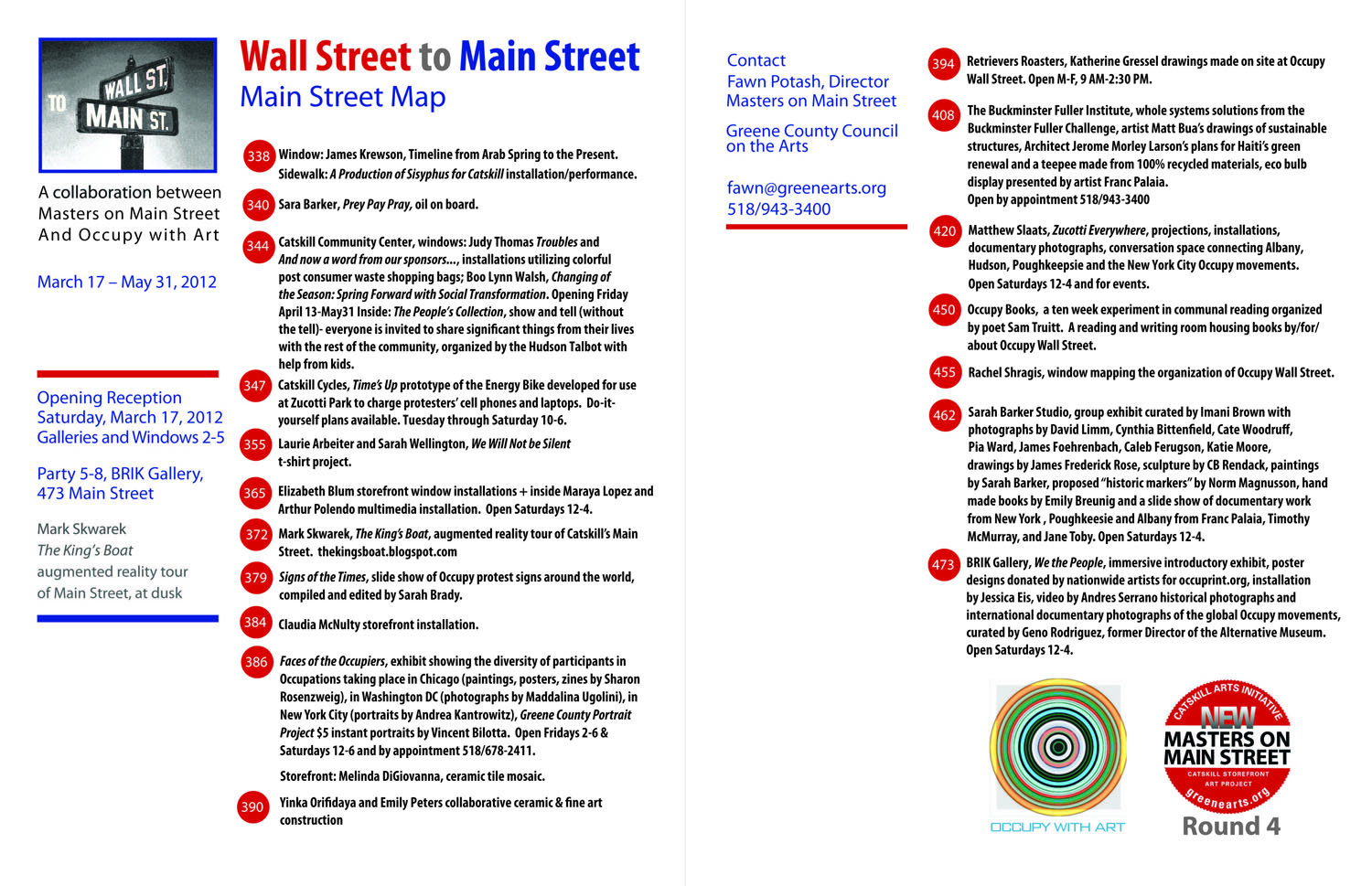

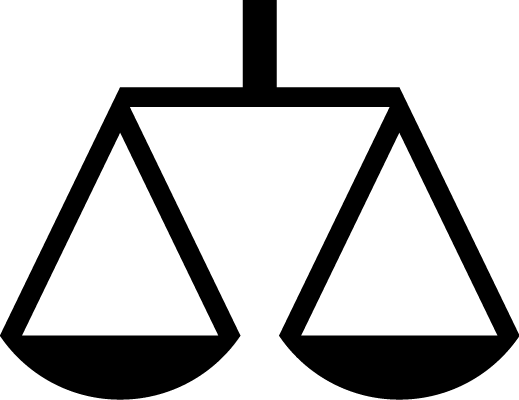
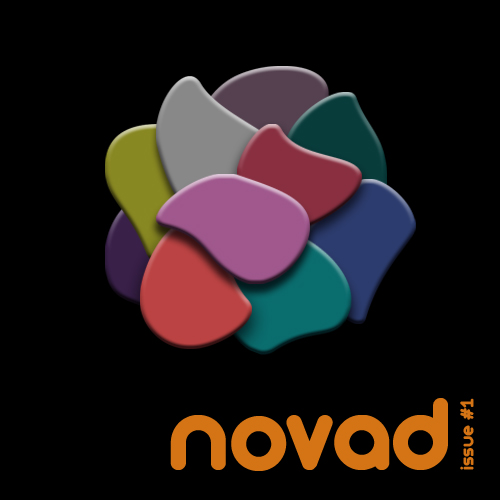
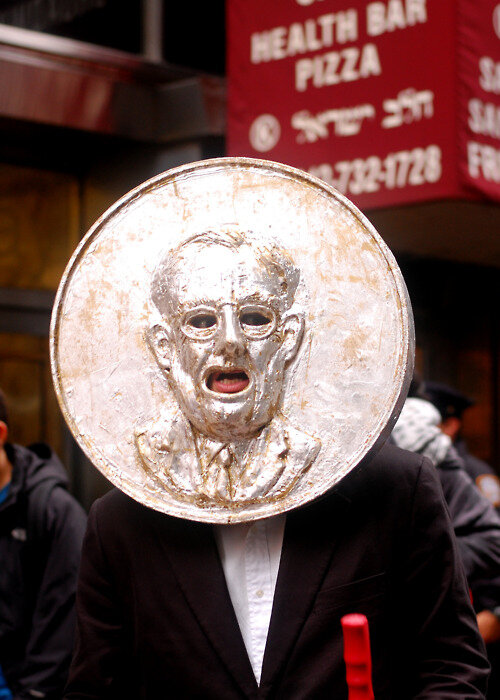
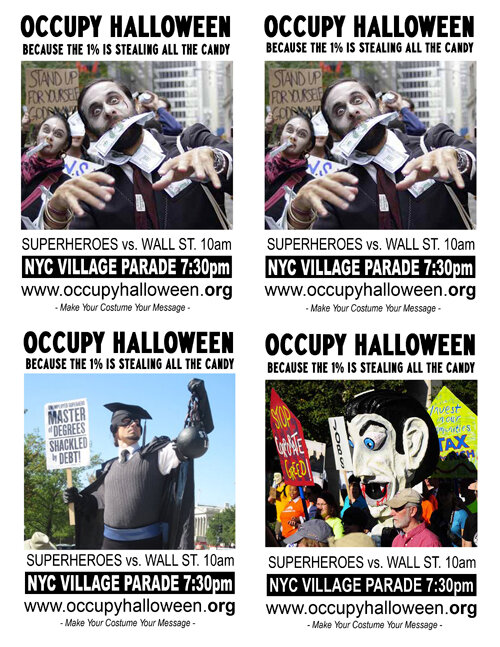
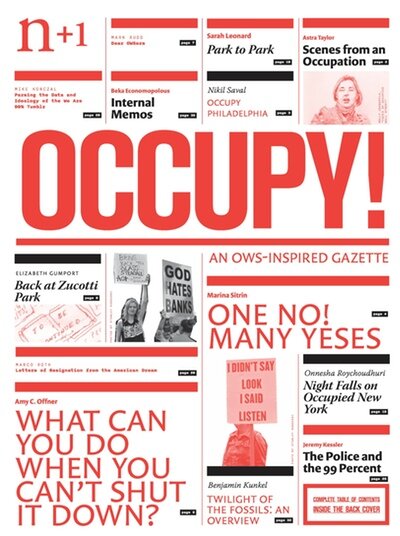
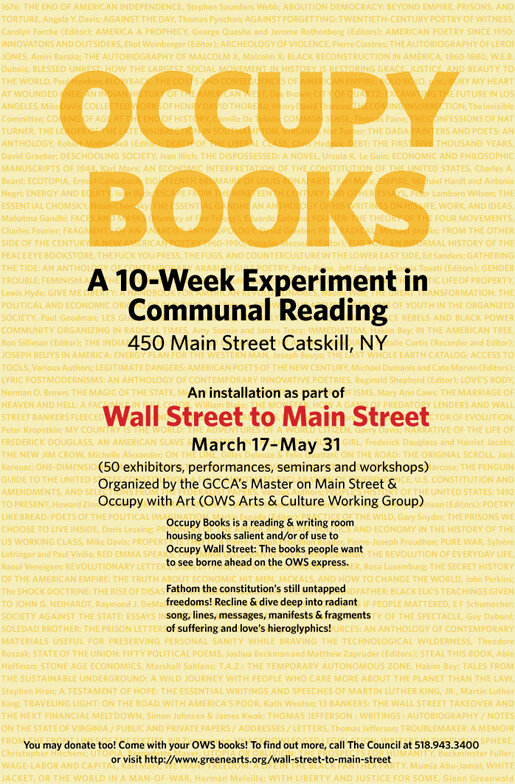
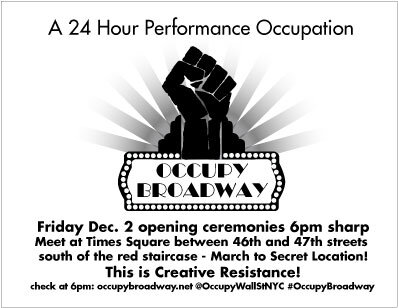
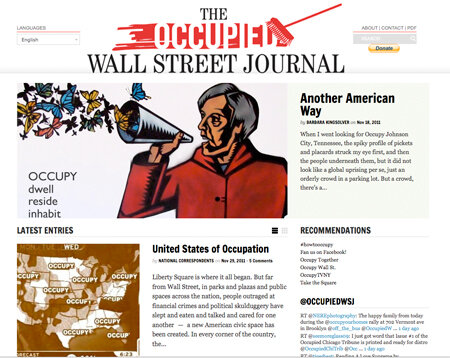
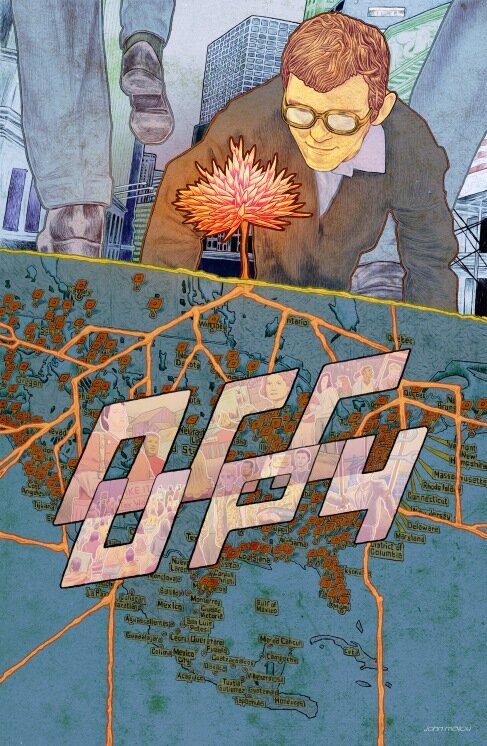
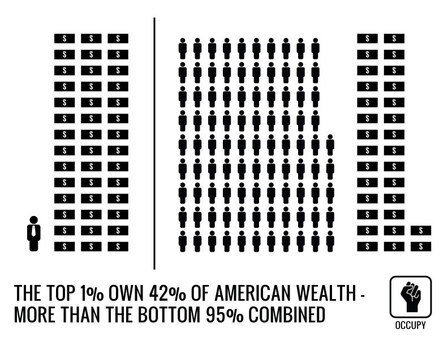
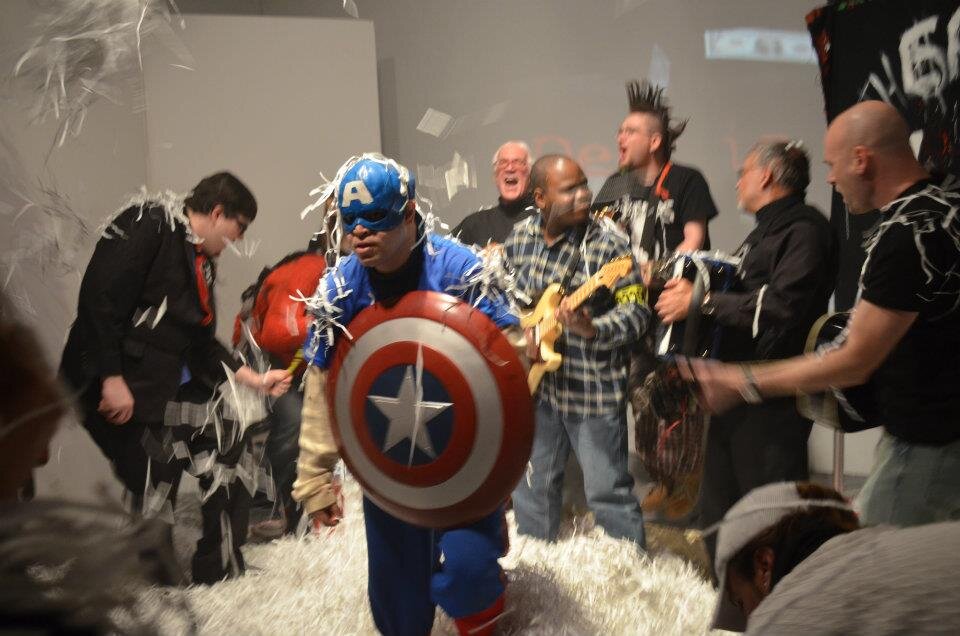
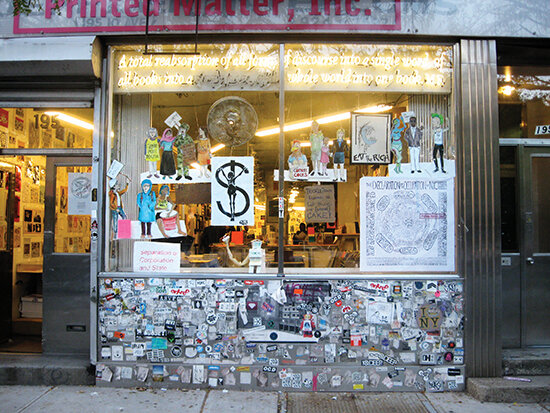
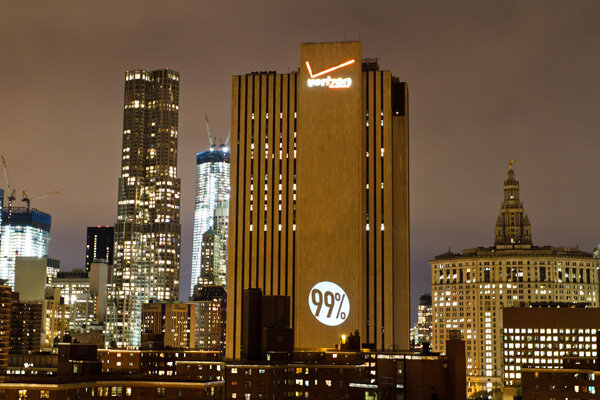

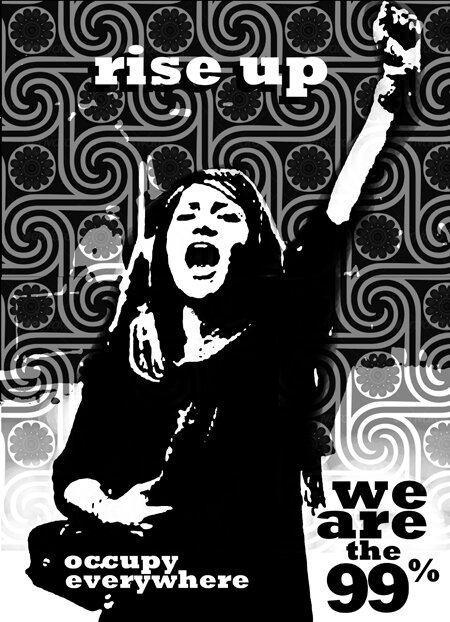
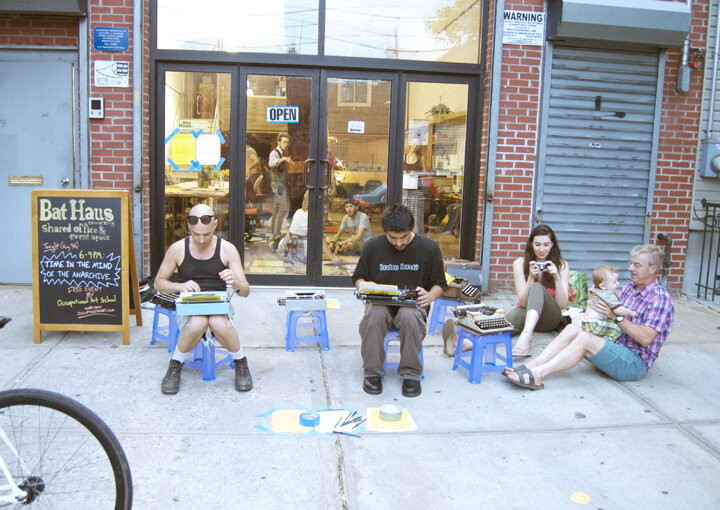
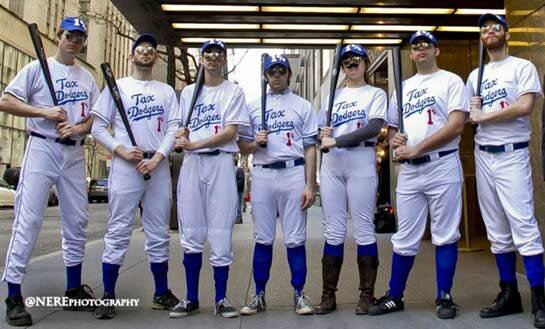
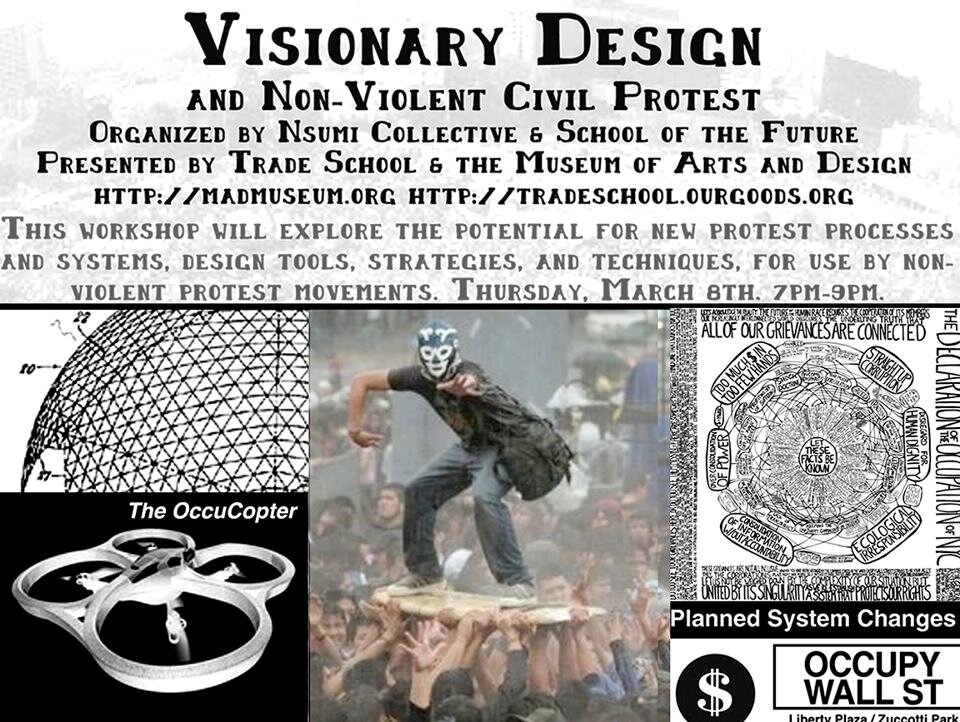

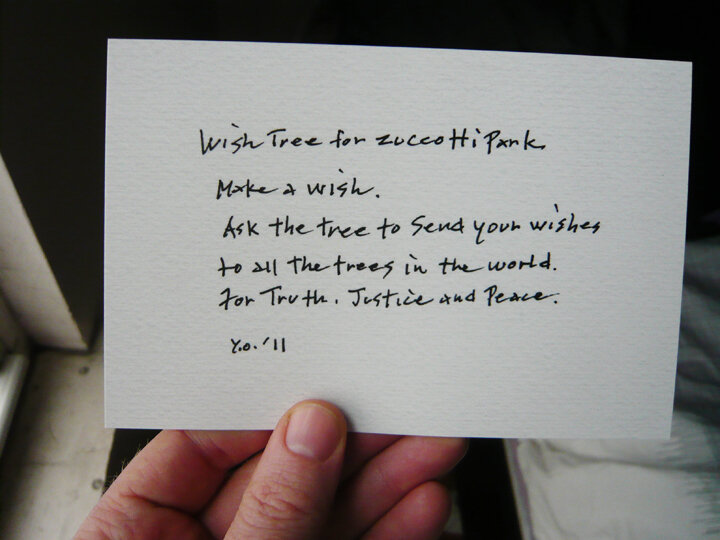
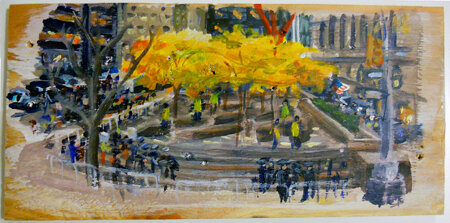



![“If Stripes Could Talk”/ The New Studio #2 [Homage to Buren (January 9, 2020 - 7:37 PM PST)]](https://images.squarespace-cdn.com/content/v1/501abbd4c4aaab20160f16af/1578627354019-BUHHM31FKKO16TV6N1DW/tns2.jpg)


![Currents, Flow and Reproduction Series #59 4D Quantities Series #14 [Meta-Element (Portal)] Vinyl on Canvas 12" x 9" $950](https://images.squarespace-cdn.com/content/v1/501abbd4c4aaab20160f16af/1578341443439-Y4U0XCE8U9SMHNNIGJ7I/cfr59.jpg)
